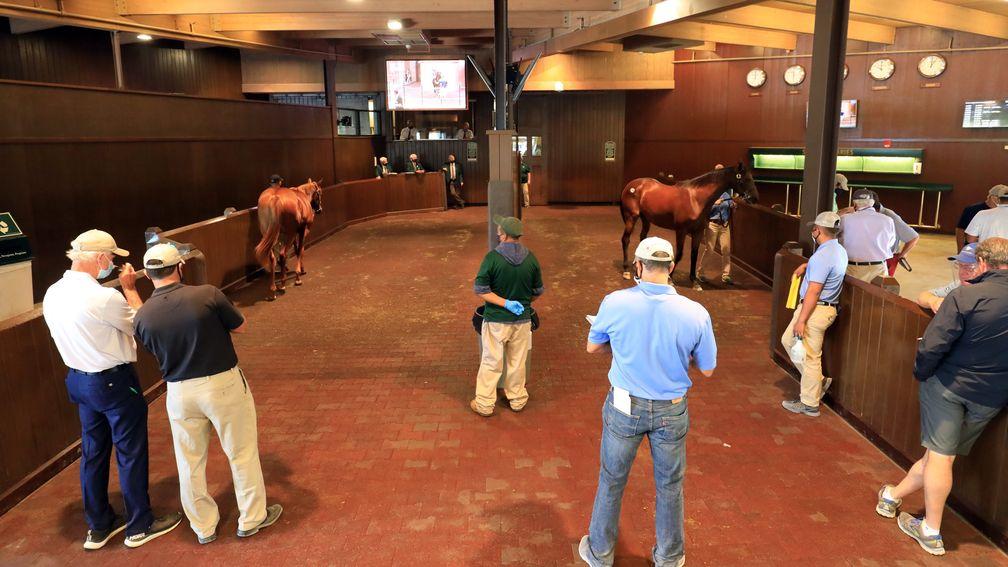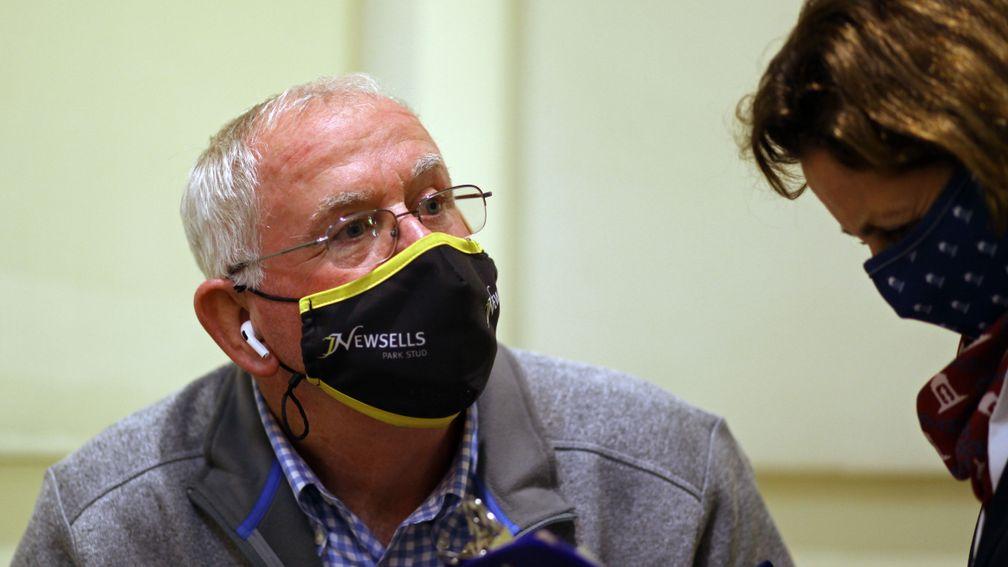'Don't think that this horse can't run, think discount' - is new mindset needed?
Pre-Keeneland sale panel of vets and horsemen provides much food for thought

A few days before two weeks of action kick off at the Keeneland September Sale, which begins on Monday, a panel of veterinarians and horsemen gathered in the storied sales pavilion near Lexington to discuss what issues in veterinarian reports buyers may be able to overcome when purchasing a horse at auction.
The question and answer-style panel, called 'Deal or No Deal' and conducted on Friday on vet findings in sale yearlings, was presented as an educational opportunity by the Consignors & Commercial Breeders Association.
Speakers David Anderson, Dr Jeff Berk, Dr Greg Fox, April Mayberry, Dr Scott Pierce, and Mike Ryan responded to questions presented by CBA members.
Berk opened the dialogue with a strong statement, saying: "We're trying to be more accurate with our assessments of these horses because what we're hoping to see — and what we have seen on many horses — is that good racehorses can race with all kinds of issues.
"We are trying to put the numbers to that and do this research so that we can be able to tell people not just based off our general impression, but backed up with these numbers."
Berk, who has been involved in an extensive and ongoing study of sesamoiditis and stifle lesions, went on to emphasise that horses can live well with many minor issues when they are managed properly. Still, notes made on the vet sheet of a sales yearling often deter potential buyers from youngsters that can go on to be successful racehorses.
Berk said: "Sesamoiditis is a great example of a condition that most of the time is fine, if it's given proper time and management. There are some things that you just can't rush."
Anderson, a leading Canadian breeder and consignor through his Anderson Farms, said he thinks some vets may be worried about saying the wrong thing, not saying enough, or saying too much. He said he views yearlings with minor imperfections as opportunities in the making.
"I know when I'm buying a horse, I look for faults," he said. "If I'm looking at a well-bred filly, I want to see a blemish. To me, that gets me thinking about a discount. Don't think that this horse can't run, think discount.
"At the end of the day, the bloodstock agent and the owners have to educate themselves. That's the key here."
Across the board, panel members emphasised that reflecting on the reports has become a large focus for many buyers, resulting in many good horses getting passed up.
"Horses will run through a lot of stuff and good horses will last if you take care of them," said bloodstock agent Ryan.

He went on to express how he is flexible when looking at horses and making decisions about purchases, saying: "I think we as buyers, trainers and agents need to be a little more open-minded, because most horses will have some sort of finding radiographically. That doesn't mean that horse can't train and compete to be successful.
"I'm a big believer in the feel the horse gives me. Runners can come from anywhere, by anything, and out of anything. Foolish Pleasure almost rubbed in front he was so close, and he earned over a million dollars."
Ryan said many good horses can be passed up because a buyer will walk away from a vet report when they see a lot of writing, and that's all it takes.
"It's an inexact science," he said. "Always has been, always will be. We're all working hard, we're trying to be smart, but sometimes we go too far and we're looking for excuses not to buy the horse. If you really want the horse, just factor this in."
Moving on from radiographs, Fox spoke about heart scans and questioned their validity in relation to considering a horse for a racing career.
He said: "What is the question being asked of someone who wants a heart scan? If that question is, 'Does this horse have a good heart?' then there is a fundamental misunderstanding of the role of the cardiovascular system in performance potential of the horse.
"Most horses at the sale do not have cardiac pathology that can be identified by either ultrasound or oscillation."
Fox said that this may not mean horses aren't harbouring a potential risk, but that, in examinations he performs, only obvious arrhythmias or vascular disturbance in the left ventricles can be seen, and those are rare.
"I cannot speak exactly to what other practitioners are doing in their examinations and reporting; however, I believe that many buyers do not clearly understand what the actual relevance of this information is in the decision-making process," he said.
"While there is a remarkable range of heart types that exist in the thoroughbred horse, there are also many types of hearts that are founded in graded stakes winners. For that reason, there are very few that could ever be considered a 'fail' with respect to their pre-purchase exam."
Pierce of Rood & Riddle Equine Hospital touched on the importance of the grade of a horse's throat and reminded the audience that a scope below perfection should not be a reason for turning away a horse.
"One thing that disappoints me now is I'm hearing a lot of negativities about 2A airways," he said. "That's crazy. They're normal. The 2As are 75 per cent of the population. To me, 1A and 2As are A throats, period."
Pierce went on to explain that even though a 2A throat does not scope as a 1A, it does not mean the horse has a bad throat.
A study Pierce is just finishing up focuses on a horse's throat as it matures in age from two to four. He found in the review process that in just under 700 horses the 2As were "superstars."
He said: "The 2As outperformed the 2Bs almost 2-1 in earnings. They outperformed the Grade 1s. So, I don't want to hear anybody say the 2As aren't great throats. They very much are."
In a recent two-year-old study by Pierce, there were two Grade 1 winners out of the 1A throats and 11 Grade 1 winners out of the 2A group.

An example mentioned by the panel was 2007 champion male sprinter Midnight Lute, a dual winner of the Breeders' Cup Sprint, and multiple other graded stakes, who had a grade 4 scope.
"A 2A throat, across the board, can be just as fine in performance as a 1A," Pierce concluded.
For all the racing and bloodstock news from North America, visit Bloodhorse
Published on inNews
Last updated
- Royal Ascot winner Arizona on the move as Coolmore sire joins the exodus to Turkey
- Something different for Burrows as Group 1-winning trainer consigns at the Tattersalls Cheltenham December Sale
- Breeding right to Blue Point sells for €430,000 on Darley winning bid platform
- Classic hero Metropolitan set for strong home support with Etreham busy at the sales
- 'It has been nothing short of incredible' - Grace Hamilton on Godolphin Flying Start experience
- Royal Ascot winner Arizona on the move as Coolmore sire joins the exodus to Turkey
- Something different for Burrows as Group 1-winning trainer consigns at the Tattersalls Cheltenham December Sale
- Breeding right to Blue Point sells for €430,000 on Darley winning bid platform
- Classic hero Metropolitan set for strong home support with Etreham busy at the sales
- 'It has been nothing short of incredible' - Grace Hamilton on Godolphin Flying Start experience